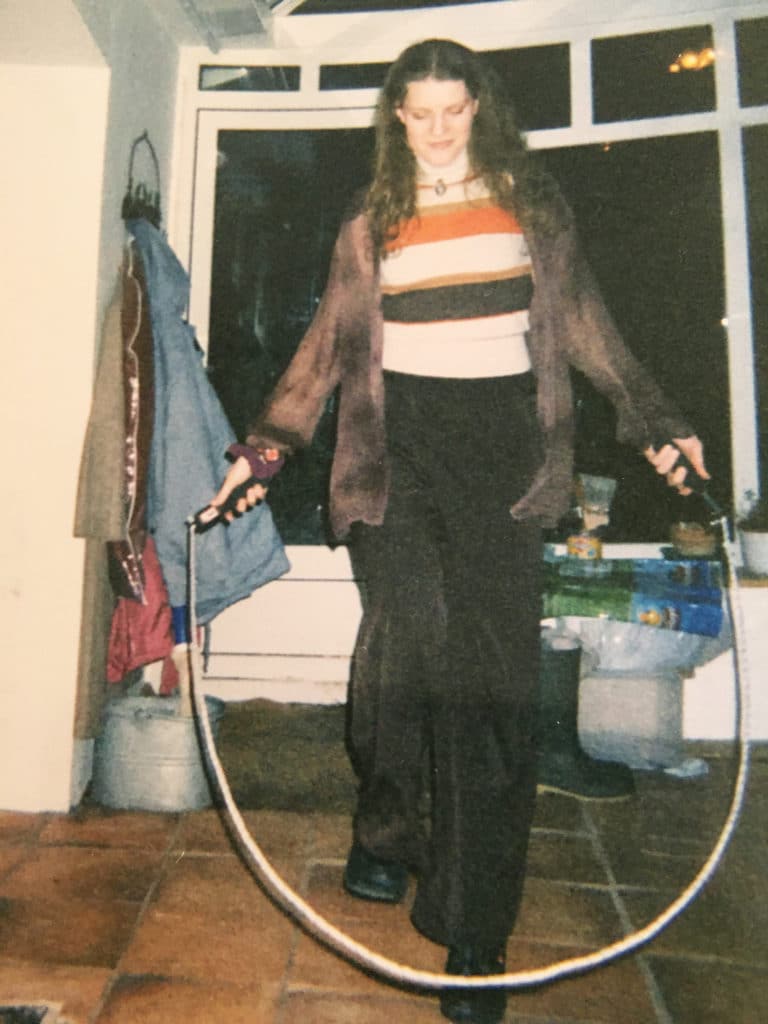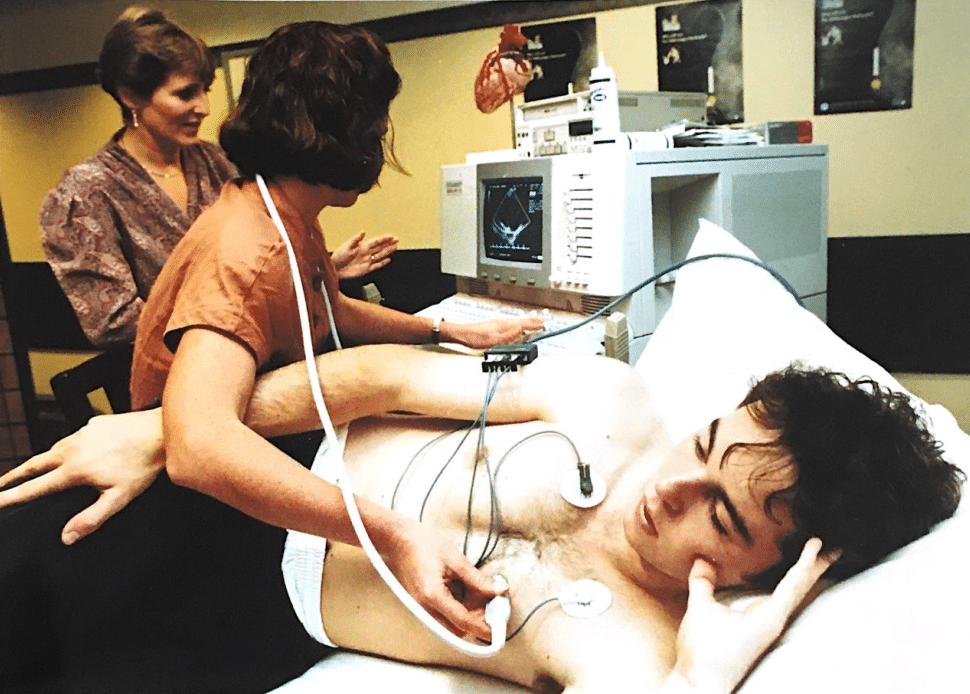This is the second part of CRY’s “Looking Back at 25” series. As we mark our 25th year anniversary, these articles will remember key parts of CRY’s history, and tell the story of how the charity has developed and got to where it is today.
…..
Those familiar with CRY’s history will be familiar with the Skipathon!
If not, we’ll once again hand over to CRY’s Founder, Alison Cox MBE, to explain in her own words this important chapter in CRY’s story:
“Following Steve’s diagnosis and return to the UK, I became increasingly frustrated at the lack of information available about cardiomyopathy, which was all too often excused by cardiologists because it was ‘so rare’. How could anyone determine if it was rare if it was not investigated?
“So, I set my cap on raising funds for a screening machine (an echocardiogram), as apparently the weekly clinic at St George’s Hospital (where we had all been tested) had needed to borrow one from another department to examine their (mostly young) patients. I soon realised that raising funds could also raise awareness.

“As a family, we were still very involved in the world of tennis and so I decided to devise a ‘Skipathon’ for junior tennis players. With the enthusiastic support of the then top tennis player in the country Jeremy Bates (who remains a Patron of CRY to this day) and the Director of Junior Tennis Sue Wolstenholme, I created a list of 50 top prizes, which we knew would appeal to our youngsters!
“The skipping results had to be authenticated by an adult on the form we provided, and there was to be no restriction on the number of attempts! Sue gave me a list of all the organisations that she knew supported British tennis and I reached out to each one, which resulted in receiving a conglomeration of interesting and generous prizes ranging from a TV, to tracksuits, to tickets and tennis training manuals.
“Sue ensured all the Lawn Tennis Association coaches were alerted to the Skipathon and we found that they welcomed the possibility of their ‘charges’ being inspired to get fitter through their skipping endeavours. After the Skipathon deadline was closed, I created a list of the first 50 skippers who then personally selected their chosen prize!
“The 1993 National Indoor Championships, in Telford, came shortly after all this excitement and Sue contacted the coaches to confirm that there was going to be screening available at the Championships for their players. Tragically, a leading 17-year-old tennis player had recently collapsed and died without warning – he was found to have cardiomyopathy. He’d simply stood up to turn on his TV. There’d been no symptoms, no warning. So, it was little surprise that the response from the coaches was very strong.
“That weekend, we screened 60 young people (as an aside, by 1996, we’d screened 2,000 young people. But more of that to come in later blogs in the series!)
“Jeremy willingly agreed to be screened on BBC Breakfast, raising huge awareness and helping to start the conversation about young sudden cardiac death on a national level. At a grass roots, local level, I then bought a badge machine and started punching out hundreds and hundreds of badges to distribute!

“Through the extremely generous and ongoing support from our tennis connections (and of course the incredible efforts of our ‘skippers’ across the UK) we were later able to buy the echo as we’d promised Professor McKenna, as our donations reached £60,000.
“But, I struck a deal… we could ‘borrow’ the equipment (and a doctor) at weekends to allow us to continue with our screening mission (sound familiar? The building blocks of our sophisticated screening programme we know and applaud today. Again, we’ll look in more detail about how CRY screening developed and grew in our coming blogs!).
“Cardiac Risk in the Young, or CRY, was up and running and on May 5th, 1995, CRY was established, and officially launched as a charity later that year on November 21st. The rest, as they say, is history… but the important thing to remember is the simplicity of the Skipathon really kickstarted CRY’s wonderful heritage of fun fundraising.
“It also attracted the attention of primary schools across the UK and was even incorporated into our annual Short Tennis event on the indoor courts at Wimbledon. Gradually, it was phased out and replaced by other events and initiatives.
“But, here’s a thought… as we all look to different ways of supporting CRY during this period of social distancing, why not take up skipping in your garden, if you have the space to do so, and let’s reinvigorate CRY’s sponsored ‘Skipathon’ for our 25th anniversary. It’s a great way to stay active during lockdown and anyone of any age can give it a go.
“Send in your photos – we’ve still got some great ones from the early ’90s! – and we can share them on social media.
“Let’s see if together we can help history to repeat itself!”





